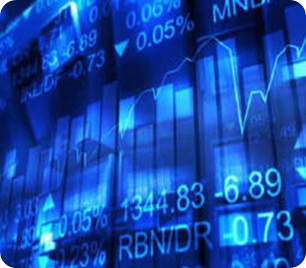Get Accurate Share Market Tips on Your Mobile Now for Amazing Profits - Call now at 09829714440
Trading cost has been defined as the cost of making a transaction which includes the commission as well as the bidding and the asking price. Anytime an investor goes to the market to buy or sell securities (whether shares or debentures), he has to pay a certain fees to the investment adviser or broker for brokerage fees, stamp duty, etc, which is called as Trading Cost. Economists also call them as transactions costs.
Transactions costs are like a tax, on trading. Every time you trade, whether you earn profits or not, you pay these transactions costs. If you have a forecast that a certain price is going to go up, then you suffer transactions costs twice: once on entry, and once on exit. For trading to be profitable, the price change that you forecast has to be larger than this “round-trip transactions cost”.
 The trading costs have five parts which include the following:
The trading costs have five parts which include the following:
1. Explicit costs such as the commissions, fees and taxes. In other words, the commission that the investor pay to the broker
2. Market maker spread-difference between the bid and ask price that the specialist set for a stock, the specialist keeps the difference as compensation for providing immediacy. The lesser the liquid stocks, the specialist has the greater exposure to adverse price movements and will make the spread larger. It is also called as the “counterparty risk”. This is the risk that your counterparty reneges on the deal. This can happen at the level of one broker, or sometimes an entire exchange can collapse in a payments crisis.
Get Accurate Share Market Tips on Your Mobile Now for Amazing Profits - Call now at 09829714440
The counterparty risk is hard to quantify. As of the middle of 1993, the remaining costs added up to roughly 5%. This was an extremely large number. To buy Rs.100,000 of shares, you would normally suffer Rs.5000 of transactions costs, plus some counterparty risk. In speculation, if you forecasted that a price would go up, then it would have to go up by at least 10% for your transactions to be profitable (you used to lose 5% on entry, and 5% on exit).
3. “Market impact” results when the high volume trade influences the market price. The buy price will always be a bit high, and the sell price will always be a bit low. E.g. if a security trades at Rs.200 or so, then if the buy price turns out to be Rs.204, then we say that the impact cost is 2%.In fact, the market impact can be divided into two components-the temporary and the permanent. The temporary is due to the need to fill the order. The permanent impact is due to the change in the market’s perception of the security as a result of the block trade.
4. The fourth cost is the paperwork involved in signing transfer form, courier, etc.
5. Finally, the fifth cost is the risk of stolen or counterfeit certificates.
The total trading cost of a buy transaction is calculated by taking the percentage increase of the average purchase price as compared to the price when the buy decision was made, and adding the commissions, fees, and taxes as a percentage of the price when the buy decision was made. In India in the last few years, some of the costs of trading have come down sharply. Earlier, gala was routine — today, with contract notes on the NSE, it is non-existent. Similarly, brokerage fees have come down sharply.
Get Accurate Share Market Tips on Your Mobile Now for Amazing Profits - Call now at 09829714440
Recent Comments